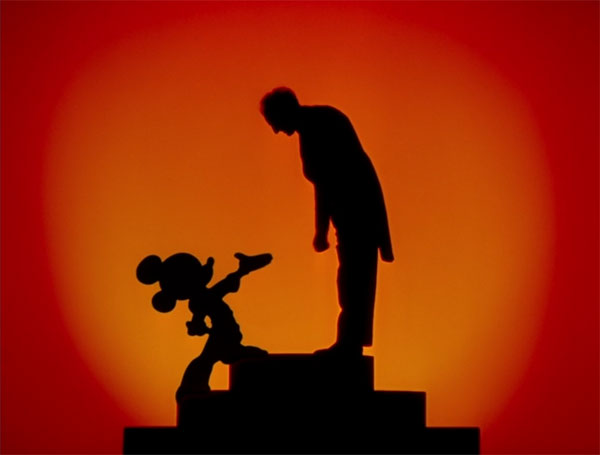
It still amazes me to realize how far Disney progressed with feature animation during the period before World War II. Snow White and the Seven Dwarfs was a great achievement and changed the medium, but that was just the starting point. Each successive film pushed the envelope and didn’t take the easy road. Instead of trying to recreate the magic of their debut hit, Walt and the animators boldly pushed forward. The result were films that are a little challenging, and Fantasia is a perfect example.
Released in 1940, Disney’s third animated feature sidestepped the typical storytelling beats. Walt collaborated with Leopold Stokowski and the Philadelphia Orchestra and mixed animation with a live concert experience. Watching this film at home today, it’s impossible to recreate what it was like to see it in the theater. Even so, it looks and sounds pristine in the version available to stream on Disney Plus.
I remember seeing Fantasia on a re-release as a kid sometime in the ’80s and not loving it. Even today, certain parts dragged. I admire the artistry and beautiful music, yet I still feel distant from some of it. It’s been a while since I watched this movie, so I’m glad that I took the time during this rewatch. Instead of writing a typical review, I am trying something different this time. I’ve structured this article by ranking my opinions of each segment. We’ll start at the bottom and ultimately get to the highlights. Let’s dive into one of Disney’s innovative animated films!
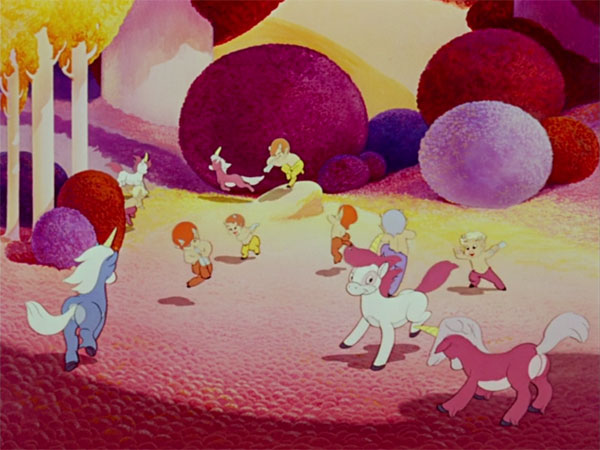
7. Pastoral Symphony
I’ll admit that this ranking partially relates to this segment’s placement later in the film. We’re well into the second hour, and my energy is waning. The beautiful music of Beethoven’s Symphony No. 6 in F Major, Op. 68, supports this presentation of mythological creatures. The animation is gorgeous, and the various creatures are all believable on screen.
We observe male and female centaurs, cupids, the families of Pegasus and more as they frolic on Mount Olympus. It looks nice but also goes on for a long time. There is no real story here, which might explain its placement. Everything looks great, though we do see a predictable look at gender dynamics with these creatures. The women ogle the men, who definitely have a “bro” mentality. There is some tension when the gods start a rainstorm, and I enjoyed the image of Zeus (I believe) throwing lightning bolts. The colorful picture above encapsulates this segment.

6. Dance of the Hours
The Disney animators’ playfulness is on full display here, with supporting music from Amilcare Ponchielli. Even if you haven’t seen Fantasia, you’re likely familiar with the dancing hippos from this sequence. We begin with ostriches, who wake up and carry fruit in a strange (but fun) sequence. Madame Upanova leads the ostriches in a dance before giving way to the hippos, who quickly steal the show.
We can talk about the hippos in tutus, but I’d rather describe the final highlight. The image of Hyacinth Hippo leaping into the arms of Ben Ali the alligator is ridiculous and fun. I should also mention the elephants blowing bubbles, which fits the mood of this segment. It’s a silly and odd segment with fun moments, but it doesn’t stick with me as much as some others.

5. Toccata and Fugue in D Minor
This opening segment just gets the show rolling, but it’s needed to set the right mood. We first see the silhouettes of musicians as they enter the theater, and the impersonal nature of the orchestra feels right. Deems Taylor, a composer and music critic, addresses us directly and gives some helpful details about each piece. Having this grounding force keeps the show from becoming too stuffy and high-minded.
Johann Sebastian Bach’s “Toccata and Fugue in D Minor” fits with the abstract animation of the final part of this segment. This piece basically serves as the overture to Fantasia. We first see the orchestra playing before the colors take over. It’s an inventive and effective way to start the film. We don’t immediately dive into a story and just enjoy the music.
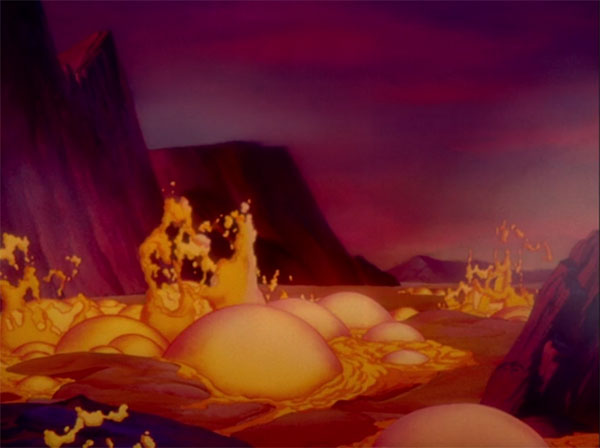
4. Rite of Spring
The most surprising part of rewatching Fantasia was “Rite of Spring”. The deliberately paced scene presents The Big Bang and the time of dinosaurs along with music from Igor Stravinsky’s ballet. Striking colors depict the “empty sea of nothingness” as our world begins. It’s interesting to consider that this epic is part of the same movie as “The Sorcerer’s Apprentice”. It’s the longest part of this film but rarely drags.
The dinosaur scenes remind me of Disney attractions like the Primeval World on the Disneyland Railroad and Universe of Energy. They pulled highlights of this segment (intentionally or not) for the excitement. We also see the end of the dinosaurs, and the scale is remarkable. The difference between the “Rite of Spring” and the top three choices is minuscule. I appreciate how far Disney took this concept.
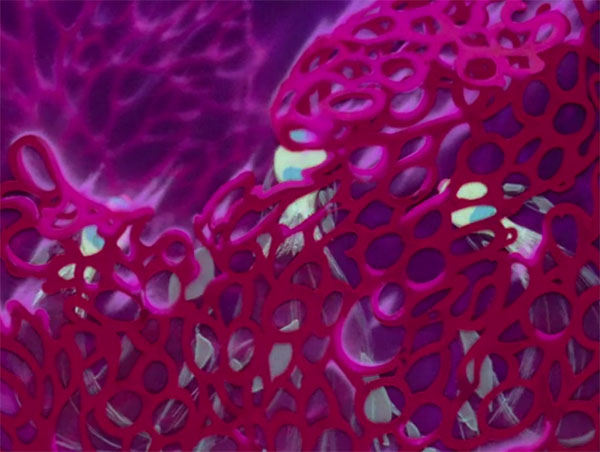
3. The Nutcracker Suite
I didn’t realize that Fantasia resurrected interest in “The Nutcracker Suite” before reading Nathalia Holt’s book The Queens of Animation. Tchaikovsky’s ballet seems perfect for this film and has now become a holiday classic. The animation in this scene is stunning, especially considering the era. The gorgeous blue background while the fairies float around the land jumps off the screen, even when viewed at home.
The use of the mushrooms and various flowers on the water provides a beautifully serene setting for Tchaikovsky’s music. The picture above is just one of many examples of how colorful is present in each frame. There is little plot once again, but it doesn’t matter because the mood is right. It also works because our next segment will be a lot more story-driven.
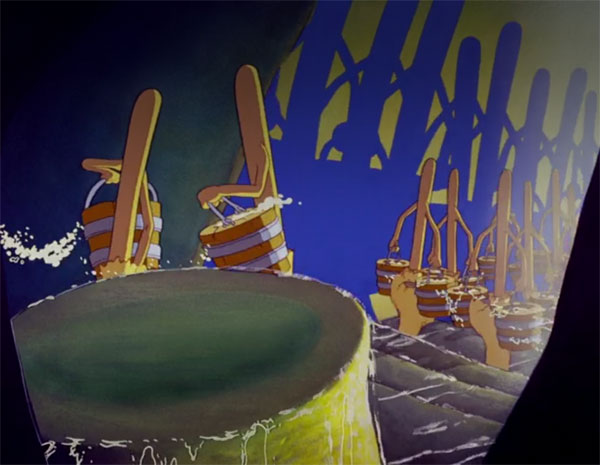
2. The Sorcerer’s Apprentice
What more can we say about “The Sorcerer’s Apprentice”? Even more than my top choice, it’s remained a constant part of Disney for 80 years. Even if you haven’t seen Fantasia, you’re familiar with this segment. The music from Paul Dukas emphasizes the danger and excitement when Mickey grabs the hat. This isn’t the confident leader we know from more recent Disney fare; this Mickey is a trouble maker.
The brooms are a little scary because there is no way to stop them. They’ll keep on washing the floor until Mickey drowns. I love the final moment (pictured at the top of this article) when Mickey meets Stokowski. This quick scene reinforces the idea that we’re still in the Disney universe despite the artistic leap with this project.
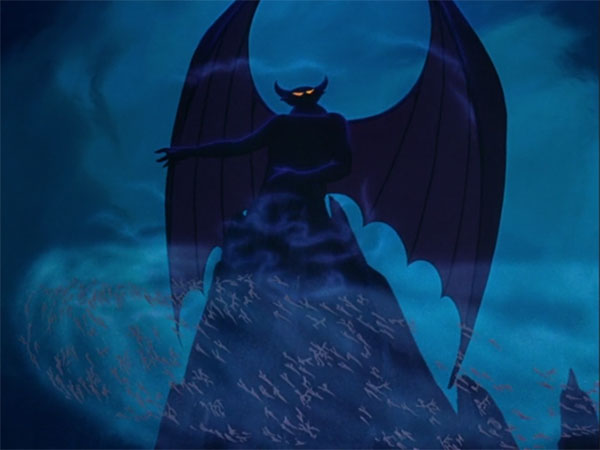
1. Night on Bald Mountain/Ave Maria
We have reached the top spot, and there was no doubt in my mind following this rewatch. Everything just clicks during this powerful, eerie final segment. It makes sense to conclude with this one; how could Disney top it? The god of evil Chernabog provides a striking image of fear and death. The music from Modest Mussorgsky fits perfectly with the eerie call to the ghosts, demons, and more. Despite the horrors, the animation remains beautiful. You can’t take your eyes off the screen.
It’s easy to forget that “Night on Bald Mountain” is just the precursor for a sweet finale with Franz Schubert’s “Ave Maria”. We see nature blooming and returning to reclaim this world along with the sun. Chernabog is frightening but also is no match for the light. The final shot of the horizon sends us to the exits with a positive feeling that anything is possible.
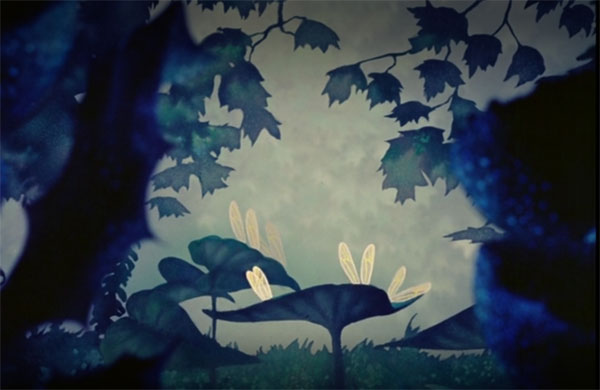
Fantasmic!, Philharmagic, and a Lost Tribute to Movies
Fantasia still has a prominent place in Disney’s theme parks, especially because of two shows. The nighttime spectacular Fantasmic! incorporates the idea of Mickey’s dream from “The Sorcerer’s Apprentice” and expands it to cover many Disney films. It also includes shots from the original short that inspired the idea. The animated segment also briefly appeared near the end of The Great Movie Ride. That part was originally going to include a more ambitious Wizard of Oz scene but instead featured Mickey.
There’s also an interesting change-up with Mickey’s Philharmagic. We arrive at a show with an orchestra set to play and Mickey as the conductor. However, the sorcerer’s hat wreaks havoc when Donald takes over and takes a trip through Disney’s popular movies. It’s a fun way to again use the original premise and create a clever attraction.
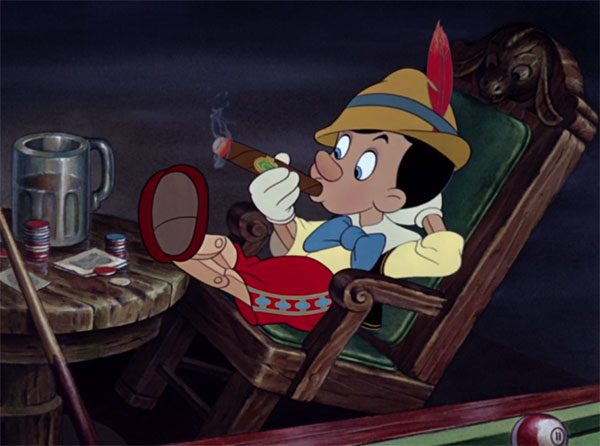
Related Articles: Fantasia
Snow White and the Seven Dwarfs (Disney Animation #1)
Pinocchio (Disney Animation #2)
This post contains affiliate links. Making any purchase through those links supports this site. See full disclosure.



Leave a Reply